#syrian poets
Text
My lover asks me:
"What is the difference between me and the sky?"
The difference, my love,
Is that when you laugh,
I forget about the sky.
My Lover Asks Me, Nizar Qabbani
#your laughter fills me like a bell#my lover asks me#nizar qabbani#poetry#literature#syrian poets#dark academia#classic academia#light academia
199 notes
·
View notes
Photo

Adonis, ‘Psalm’ tr. by Khaled Mattawa
193 notes
·
View notes
Text
"My letters to you
Are greater and more important than both of us.
Light is more important than the lantern,
The poem more important than the notebook,
And the kiss more important than the lips.
My letters to you
Are greater and more important than both of us.
They are the only documents
Where people will discover
Your beauty
And my madness."
Nizar Qabbani.
#nizar qabbani#bookblr#books and literature#love#writing#literature#short poetry#reader#academia aesthetic#nizar qabbani poetry#arabic poems#desiblr#love letters#arabic#syrian poet#writerslife#writers on tumblr#reading#reading in 2023#writeblr
10 notes
·
View notes
Text

The Past by Adonis (tr. Samuel Hazo), from “Transformations of the Lover”
Text ID:
From the desert it comes,
and on its face is the hunger
of pigeons and parching flowers.
#adonis#transformations of the lover#quote#typography#literature#aesthetic#dark academia#light academia#cottagecore#samuel hazo#the past#arabic literature#arabic poet#syrian literature#original post
15 notes
·
View notes
Text
“[Love]He grinds you to whiteness. He kneads you until you are pliant; And then he assigns you to his sacred fire, that you may become sacred bread for God’s sacred feast.
All these things shall love do unto you that you may know the secrets of your heart, and in that knowledge become a fragment of Life’s heart.
But if in your fear you would seek only love’s peace and love’s pleasure, Then it is better for you that you cover your naked- ness and pass out of love’s threshing-floor, Into the seasonless world where you shall laugh, but not all of your laughter, and weep, but not all of your tears.
Love gives naught but itself and takes naught but from itself Love possesses not nor would it be possessed; For love is suf- ficient unto love.
When you love you should not say, ‘God is in my heart,’ but rather, ‘I am in the heart of God.’
And think not you can direct the course of love, for love, if it finds you worthy, directs your course.’
--On Love; from ‘The Prophet’ by Khalil Gibran
#literature#poetry#philosophy#meditation#god#spirituality#enlightenment#khalil gibran#syrian#history#poet#writers#writing#love#mystic#mysticism#metaphysics#sacred#theology
5 notes
·
View notes
Text
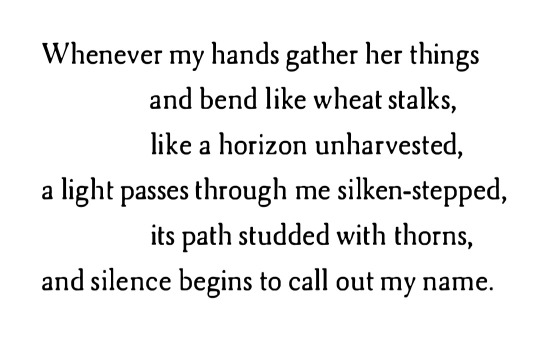
Adonis
#poet#poetry in translation#poetry#poetic lines#quotes#fragments#literary quotes#literature#syrian poetry
7 notes
·
View notes
Text
can’t believe i’m feeling attacked by a verse i found on a random arabic phrases generator
and the verse in question is ﺇِﻧِّﻲ ﻓِﻲ ﺍَﻟﺤُﺐِّ ﻣَﺬﺑُﻮﺡٌ ﻭَﺫَﺍﺑِﺢٌ which apparently goes along the lines of “in love i am slaughtered and slaughterer”. so raw so true
#apparently it’s from a poem by syrian poet nizar qabbani but I’m still looking for other sources#(of course since I know -47392 things about arabic I cannot 100% confirm)#but still. it slaps
12 notes
·
View notes
Text

#poetry#quotes#literature#poem#quote#text#aesthetic#poetic#thoughts#adonis lines#arabic poetry#arabic poems#syrian#dark acadamia aesthetic#unrequited feelings#existential crisis#expressionism#poets
2 notes
·
View notes
Text
LGBT literature of the 1860s–1910s. Part 5
After a long pause, the list is back! Here we have a couple of plays, accounts by two trans women, lesbian poetry, and more.
1. Despised and Rejected, by A.T. Fitzroy (Rose Allatini; 1918). A pacifist novel published during World War One? With gay and lesbian characters? Yes, that was sure to get people in trouble. Its publisher was fined and the judge called it “morally unhealthy and most pernicious”. So, Dennis is a young composer who hates violence and therefore refuses to go to war. He also suffers because he is a “musical man”, that is, gay, and loves Alan, art-loving son of a wealthy businessman. His friend Antoinette, meanwhile, is “strangely attracted” to a woman. Nevertheless, the two attempt to love each other. When the war begins, Alan appears in Dennis’ life again, and they try to avoid being sent to the front together. Alan also persuades Dennis to accept who he is. Edward Carpenter himself defended the novel, saying that “the book is also a plea for toleration of a very much misunderstood section of humanity”.
Read online
2. Autobiography of an Androgyne, by Ralph Werther (1918). Ralph Werther, also known as Jennie June, wrote this autobiography for doctors, and it is very revealing. Being a New York fairy (male prostitute) and possibly a trans woman, they tell frankly about the city’s gay underworld of the early 20th century and their personal experience, which is sometimes too frank and dark perhaps, but all the more interesting.
Read online
3. Poems by Mikhail Kuzmin. Kuzmin was not just the author of Russia’s first gay novel, but also a poet. Many of his works were dedicated to or mentioned his lovers. I’d recommend Where Will I Find Words (in English and Russian), Night Was Done (both in English and Russian), from the 1906-1907 collection Love of This Summer (available fully in Russian), mostly based on his love affair with Pavel Maslov in 1906. And also If They Say (in English and Russian), which is a great statement.
4. The Loom of Youth, by Alec Waugh (1917). A semi-biographical novel based on Evelyn Waugh’s older brother’s experience at Sherborne School in Dorset. It is a story of Gordon Caruthers’ school years, from the age of 13 to 19, and it is full of different stories typical for public schools, be it pranks and cheating exams or dorm life and sports. Although the homosexual subject was quite understated, the author implied that it was a tradition and open secret in public schools. The book became popular and soon caused a great scandal. Worth noting that before that Alec was expelled for flirting with a boy.
Read online
5. Two Speak Together, by Amy Lowell (1919). Lowell was a famous American poet and lesbian. Many of her poems were dedicated to her lover, actress Ada Dwyer Russell, specifically the section Two Speak Together from Pictures of the Floating World. These poems are infused with flower imagery, which wasn’t uncommon for lesbian poetry of the time.
Read online
6. De berg van licht/The Mountain of Light, by Louis Couperus (1905-1906). Couperus is called the Dutch Oscar Wilde for a reason: this is one of the first decadent novels in Dutch literature. It is also a historical one, telling about a young androgynous Syrian priest Heliogabalus who then becomes a Roman Emperor. Homoerotism, hedonism, aestheticism: Couperus creates a very vivid world of Ancient Rome. He also covered the topic of androgyny in his novel Noodlot, which was mentioned in Part 3 of this list.
Read online in Dutch
7. Frühlings Erwachen/Spring Awakening/The Awakening of Spring, by Frank Wedekind (1891, first performed in 1906). This play criticized the sexually oppressive culture prevalent in Europe at the time through a collection of monologues and short scenes about several troubled teens. Each one of them struggles with their puberty, which often leads to a tragic end. Like in The Loom of Youth, homosexuality is not the central focus of the play, but one character, Hänschen, is homosexual and explores his sexuality through Shakespear and paintings. The play was later turned into a famous musical.
Read online in German or in English
8. Twixt Earth and Stars, by Radclyffe Hall (1906). Though it wasn’t known to many at the time, these poems were dedicated to women, some to Hall’s actual lovers.
Read online
9. The Secret Confessions of a Parisian: The Countess, 1850-1871, by Arthur Berloget (published in 1895). This account is similar to the Autobiography of an Androgyne, albeit shorter. The author nowadays is thought to be a trans woman. They describe their love for women’s dresses, the euphoria from wearing dresses, makeup and wigs, the life as a “female impersonator” in Parisian cafe-concerts, and their love affair with a fellow prisoner. The autobiography is not available online, but you can read it in Queer Lives: Men’s Autobiographies from Nineteenth-Century France by William Peniston and Nancy Erber.
10. At Saint Judas’s, by Henry Blake Fuller (1896). This is possibly the first American play about homosexuality. It is very short. An excited groom is waiting for his wedding ceremony in the company of his gloomy best man. They are former lovers, and this short scene is not going to end well…
Read online
Previous part is here
#lgbt literature#lgbt fiction#queer history#queer fiction#lesbian literature#russian literature#gay literature#gay history#spring awakening#lesbian history#blog: history#blog: literature
254 notes
·
View notes
Text
all russians are guilty and let me explain why.
make yourself comfortable, it's gonna be a long ride.
you might notice that every time, if russians appear in a movie, series or documentary, they have either done something criminal, are doing it or are planning to do it. because the entire history of russia's existence is built on crimes, wars, genocides and occupations — Ukraine, Syria, Georgia, Chechnia and many more.
russia unleashed the most frequent genocidal attacks against Ukraine. occupation of Ukrainian lands and enslavement of Ukrainians, constant persecution and murder of speakers of the Ukrainian language, Ukrainian poets, writers, teachers — the entire nation, any Ukrainian figures of culture or politics. And, of course, the awful Holodomor (if you more into visualization, watch the movie about the Holodomor — «Mr Jones».)

no matter who is in power, throughout its existence, russia has been trying to destroy Ukraine and everything related to Ukrainian culture and history.
first of all, I think the terms «guilty» and «bad» must be separated here. I'm not saying all russians are bad, because «bad» is quite subjective and vague term. just like term «good». a person can be good in relations with neighbors, good at their job or good meaning polite. but what happens to a «good» person who stands by when other people are killed, tortured and raped in front of this person's eyes and on this person's behalf? this person becomes guilty. and many can and DO have the right to call and consider this person bad.
what exactly you are doing when you write «not all russians support the war»? you tell Ukrainians that THIS TIME there are definitely good russians, good guys among the people who constantly repressed Ukrainian people. but let me tell you this. if ten people stand in front of me and tell me that only one of them probably is not a murderer, I WILL NOT trust that person. I won't risk my life, and I'm sure you won't either.
I, like many Ukrainians, had friends or relatives in russia. but all of us were betrayed by these people, because it is in their DNA to put themselves above Ukrainians. and it's quite unreasonable in the digital age to justify their position about war by the fact that they don't know anything and totally drowned in propaganda. do they not know how to search for information, use their phones, computers or brain?
when you say that right now not all russians are against Ukraine or Syria, you cannot be sure that a russian who writes «I don't support the war» is telling the truth. that this person is not trying to maintain their public image and avoid condemnation. how can we believe the word of the representatives of the nation that every decade wage a war? the presumption of innocence doesn't apply here, hundreds of thousands of victims of russia are proof of that.

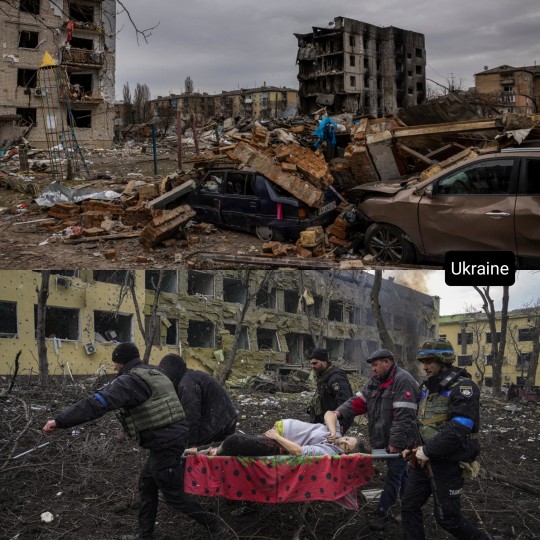
my favorite topic that people like to manipulate is how can we blame russian children. sure, we are in our right mind, so we don't say that a russian child is as guilty as an adult russian man who raped Ukrainian children and tortured Ukrainian women and men. we say that the russian child must know and feel collective responsibility from an early age, so that in the future the child doesn't take the place of that adult russian man.
while other countries honor the memory of their heroes and victims of the WWII on the day of victory over the fascists, only the russians proudly and joyfully said every year that they could repeat and start another war. which they did. that's why russian children should see that the world associates russia only with death, crimes and wars. that the world doesn't tolerate russian products, art, culture or people. this is the only way children will be able to realize from an early age that this way of russia's lifestyle is condemned by the world and must be radically changed.
Ukrainian and Syrian children, who are currently suffering from russia's actions, grew up too early and lost their childhood, they know what war is, know that it's evil and russia is a terrorist state. russian children should know this as well, so that the changes in the russian mentality — that the world has been waiting for several centuries in a row — have come.

you say russian children are not guilty, sure, but they are taught that war is branded, powerful, cool and solid. Ukrainian and Syrian children are not guilty, but they are taught how to act if their parents are killed by a russian missile. you say russian youth are not guilty and shouldn't risk their future to protest against the war. Ukrainian and Syrian youth are not guilty, but every day they give their lives for the freedom that the russians are trying to take away.
russian soldiers who went to kill Ukrainians and Syrians. russians who are relatives, friends or colleagues of these soldiers. russians who openly support wars in Ukraine & Syria or show their passivity. russians who volunteer to support the russian army. russians, who for centuries raised their children with imperialist views and contempt for other nations and races. and, as history shows, will continue to raise in the same way, no matter how the war ends. if russia loses they will raise children ready for another revenge. if russia wins they will raise children with mindset that Ukrainians are an inferior nation. russians have hundreds of years of experience in it. ask how the peoples that russia once occupied live today.
imagine what those hundreds of thousands of russian soldiers would achieve not on peaceful Ukrainian streets, killing people, but somewhere in a square in moscow, protesting against the war. soldiers, their relatives, friends and neighbors. eight years ago, Ukrainians protested against the dictator, dying for their principles and freedom.




Iranians went against a real dictator, dying for their principles and freedom. because this is the only way to achieve change.
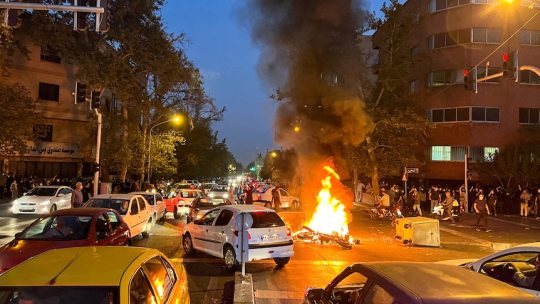
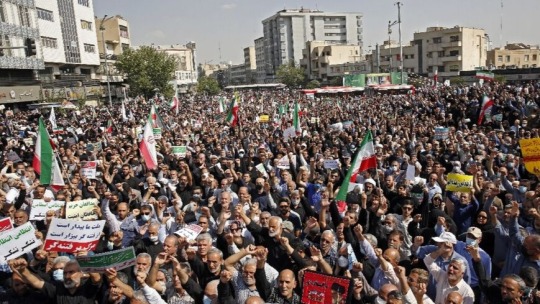
the only «protest» action of russians is to post a picture somewhere online or to stand peacefully for half an hour in a small group of people, passively holding «no war» piece of paper and leaving before dark, because tomorrow they have to go to work or universities. russians support the war or simply don't care, because it's easier to live that way. if they chose collective indifference, they must face collective responsibility.
your «not all russians are guilty» is based on your assumptions about the good faith of russians, a naive idea of what this nation really is. my «all russians are guilty» is based on hundreds of years of history of relations between russia and Ukraine. on the number of wars russia has waged in the past and is waging now, the number of nations it has destroyed and the number of evil actions the world has forgiven the russians, hoping that THIS TIME everything will definitely be different.
#please share#stand with ukraine#russia is a terrorist state#free syria#long post#spread#spread the word#signal boost#russia invades ukraine#russian agression#russian terrorism#stop russia#fuck russia#help ukraine#support ukraine#save ukraine#ukraine#syria#syria news#syrian war#current events#russia#russian war in ukraine#russian war in syria
155 notes
·
View notes
Note
hello!! firstly, you have an amazing blog. i have been able to learn a lot (and be introduced to a lot of resources) thanks to you as well as other palestinians!
out of curiousity, do you happen to have any favorite songs made my palestinian musicians? im not sure if you've already answered this, but i would like to learn some songs so i can sing them :)
hello, thanks for sending this and for your kind words. I've actually received a few questions on this.
Something in arab music culture in general (like Fairuz) is that sometimes there are writers different than singers who are sought out by singers and vice versa. This isn't always the case, of course, but something to consider is if you like a song by a specific singer, I'd suggest looking into who the composer/writer of the song is.
A well known example is Egyptian singer Abdel Halim Hafez who sung Nizar Qabbani's (widely considered the Syrian National Poet) poem, the song titled "Qariat El Fengan" or "The Cup Reading". This was a whole concert. My dad said whenever it snowed in his town, they would play the entire concert on the radio and everyone would sit around and listen to it, even if it was an hour long.
But you did ask about Palestinian singers! So I will provide some singers who are Palestinian as well as those who aren't Palestinian but their songs are written for/by Palestinians.
Sol Band in Gaza
youtube
They're currently located in Gaza and if you visit their facebook, you can see that they hold singalongs for the kids of Gaza amongst the rubble. Right now, they're holding a campaign to help rebuild their band which you can take a look and donate to here (click).
Reem Albanna is Palestinian (the singer) and the writer is Tawfik Ziad who was a Palestinian:
youtube
"Min Sijin Akkah" by Firqat Al-Ashiqeen
The backstory to this is really important — back during British colonization, there were three Palestinian revolutionary fighters who were hung by the British. Their names were Fouad Hijazi, Mohammad Jamjoum, and Attah Azeer. Apparently, they were discussing amongst themselves in their prison cells before they were hung about what they would say to their loved ones and if any of them saw their loved ones to tell them not to worry. The conversation was written on the walls of the prison cell and we don't know who wrote it... but people have been singing it ever since.
youtube
youtube
"Ya Falestiniyah" by Sheikh Imam
Sheikh Imam is not Palestinian but he is Egyptian. Palestinians really love him, though, and he has a lot of political music that many, many people love. I recommend checking out all of Sheikh Imam's songs tbh.
youtube
"Sheikh Assafeenah" sung by Palestinian singer Abdel Fattah Owainat and written by Palestinian Poet Miriam Alammoori:
I would check out both singer and songwriter for more of their songs.
youtube
Dammi Falestini by Mohammed Assaf
I don't think it requires an explanation LOL
youtube
"Taralelli" by Ens O Jam
It's a fun song, a love song. I usually sing this with my family on long car rides.
youtube
if anyone else has any recommendations, feel free to add on to this post by reblogging!
126 notes
·
View notes
Photo

Adonis, ‘The Wound’ tr. by Khaled Mattawa
35 notes
·
View notes
Text
"After you, poetry will cease."
– A Peom By Nizar Qabbani, "Bilqis" (tr. from Arabic by Yasser Aman King Saud University, Saudi Arabia)
Nizar Qabbani was a Syrian poet and diplomat who was famous for his romantic, nationalist and feminist poetry. Balqis an Iraqi woman who was his second wife. On 15th December 1981, she died in a bomb blast in the Iraqi embassy in Beirut during the Lebanese Civil War. Her death depressed him deeply, and he spent most of his life in Europe after her death. The poem was reportedly written the same day Balqis passed away.
#just read this article and the whole peom and I'm literally so close to cry now#nizar qabbani#peotry#dark academia#light academia#dark acadamia aesthetic#excerpts#fragments#poetry#books & libraries#romanticism#romantic literature#soft academia#lit#litblr#words#spilled love#spilled ink#spilled thoughts#romantic academia#books and writing#writings on tumblr#poets and writers#writers and poets#arabic poems#arabic poetry#on love#writers on tumblr#book quotes#booklr
471 notes
·
View notes
Text
palestinian poets: lena khalaf tuffaha
lena khalaf tuffaha is a poet, essayist, and translator and a first-generation american, immigrant, and expatriate of palestinian, jordanian, and syrian heritage. she is the author of two poetry chapbooks and three books of poetry: arab in newsland (two sylvias press, 2017); water & salt (red hen press, 2017), winner of the 2018 washington state book award for poetry; letters from the interior (diode editions, 2019); kaan and her sisters (trio house press, july 2023); and something about living, winner of the 2022 akron prize for poetry, forthcoming from university of akron press, 2024.
tuffaha also co-curated the collection poems from palestine at the baffler alongside fady joudah, and translated many of the pieces.
IF YOU READ JUST ONE POEM BY LENA KHALAF TUFFAHA, MAKE IT THIS ONE
you can read more about how this poem came to be, and also listen to it read aloud by numerous people.
OTHER POEMS ONLINE I LOVE BY LENA KHALAF TUFFAHA
In Case of Emergency at literary hub
Fragment at kuow (also read aloud)
Mountain, Stone at ours poetica (read aloud with subtitles)
Letter to June Jordan in September at the nation
Lullaby at poetry society of america, with reflections on the piece by naomi shihab nye
Dhayaa at sukoon
Beit Anya at poetry daily
Ruin at lunch ticket
Kaan Loves the Insomniac | كان النوم عميقا at diode
Lesson: Nymphaeum at the adroit journal (also read aloud)
Miss Sahar Listens to Fairuz Sing "The Bees' Path" at greensboro review
65 notes
·
View notes
Text
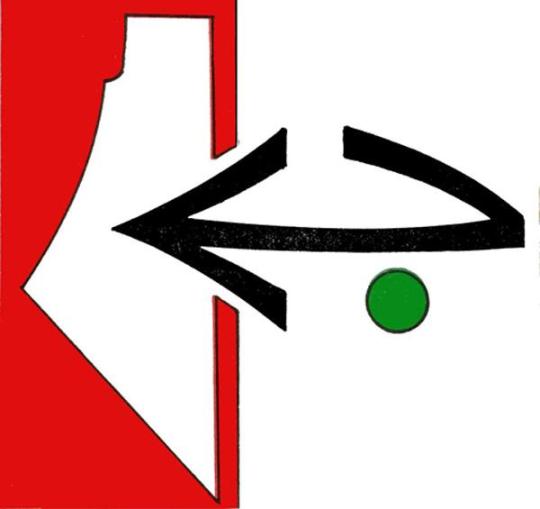
Origins of the PFLP Logo (source)
Analysis / Interpretation / Press
The Origins of the PFLP Logo
Berut, Lebanon - 1969
Vladimir Tamari - August 2016, Tokyo [speaking in the following text]
Following the overwhelming Arab defeat and the total occupation of Palestine, including Jerusalem in the Arab-Israeli War of June 1967, the Palestinians countered with a guerrilla war - the Resistance. I was in Beirut at the time, cut off from home and family, and working for UNRWA the United Nations Agency to support Palestinian refugees in the audio visual section. When our film group went to the Jordan river to film the stream of Palestinian refugees fleeing the war, I tried entering Palestine. I said "Salam" (Peace) to the lone Israeli soldier posted there on the bridge. He replied smiling "Shalom" but with his gun prevented my return to Jerusalem, my birthplace, and to Ramallah my home. Later in Beirut I worked in the UNRWA-UNESCO Institute of Education as an illustrator.
One day in early 1969 my friend X (who prefers anonymity) and I were wondering why the Resistance did not have an effective logo or symbol so we started designing one. This was a personal initiative as neither of us was or became members of any of the organizations carrying on the fight against the Israeli occupation of our beloved homeland. We sketched and played with various ideas – using the Arabic letter Fa for Falastin (Palestine), adding an arrow to the word Fath - Yasser Arafat's group, and finally adding a map of Palestine. The Fa + arrow + map made a simple dynamic symbol and I felt it was good enough to finalize and send to the PLO (Palestine Liberation Organization) as a logo suggestion. I have no idea if my covering letter and designs ever reached the poet Kamal Nasir, the spokesman of the PLO, or whether some committee there rejected a change (they already had a bureaucratic-looking logo designed by my friend the Palestinian painter Ismail Shammout. The military wing of the PLO had its own symbol, designed by the Syrian painter Nazir Nab'aa.)
Meanwhile as a graphic designer and typographer I was helping the Jordanian sculptor and poetess Mona Saudi produce her book In Time of War Children Testify of drawings and anecdotes by Palestinian refugee children from Baq'aa refugee camp in Jordan (Published in 1970 in Beirut jointly by the PFLP and Mawaqif, the journal of the Syrian poet Adonis, which Mona co-edited). I scripted the entire text of the book by hand using an early version of my AlQuds font. Mona had contacts with the PFLP, and had the idea to change the Fa of the logo to the Arabic letter Jeem for Jabha (Arabic: front). This I implemented using the distinctive curved letter jeem from AlQuds. Mona took the logo suggestion to Ghassan Kanafani, the spokesman for the PFLP. Kanafani, the famed Palestinian novelist, was also a gifted amateur artist and he immediately understood the impact of the symbol and had it adopted by the group, after changing the square format to a circle. People in the movement liked the logo and as the years and decades passed it appeared in all sorts of posters, flags, wall graffiti everywhere in and outside Palestine.
Needless to say, my having designed the logo did not mean I condoned what I soon felt were some serious mistakes made in the name of Palestine, such as the targeting of innocent civilians. In a spirit of disillusionment I left Beirut for good, and emigrated to Japan where I limited my activities for Palestine to designing posters, giving talks, and the like, devoting myself to my art and inventions. I had met both Kamal Nasir (the cousin of my brother-in-law) and Ghassan Kanafani. Once in Ramallah Kamal with his wonderful spirit, urged me to follow my dreams whatever the cost. Both he and Ghassan were assassinated by Israeli agents in Beirut, in 1972 and 1973 respectively. Their political work ended with their deaths, but their great novels and poems live on as a treasured part of the Palestinian cultural heritage. In 1976 my father obtained a permit to allow me and my family to visit him my mother and sisters in Ramallah then under Israeli occupation. On the bridge on the Jordan River I was arrested by the Israelis and detained in Jerualem for three days, where I was questioned about my above-mentioned activities then released. After three months I was not allowed to renew the permit to be in my own homeland and had to return to Tokyo.
The Arabic word Fath (Palestine Liberation Movement) with the arrow I designed. Feb 1969
X abbreviated the Fath to an 'F' with an Arrow, adding in Arabic "Towards Victory Always - Long Live Palestine!"
My drawing of the Fa + arrow March 1969
Brainstorming with X - the map is added. February 1969
The Fath logo sketch. Apri-May 1969
An early sketch of the PFLP symbol. May 1969
The final PFLP logo in outline. May 1969.
Printer's proof of the logo. Nov. 1969
Ghassan Kanafani, spokesman of the PFLP in his Beirut office around 1970 just as I remembered him. I went there on business related to the Palestinian refugee children's drawings book In Time of War, Children Testify. The finalized symbol is pinned on a map pf Palestine. To the left is the circular version which became the standard.
In 1970 I was asked to design this medallion or key-holder. 36 mm diameter.
A news item from AlHadaf the official PFLP magazine edited by Ghassan Kanafani. November 1969. "A NEW SYMBOL FOR THE POPULAR FRONT. The new symbol for the Popular Front of the Liberation of Palestine, as it appeared recently in a number of places. It consists of the letter 'J' ending with an arrow thrust forward, towards Palestine."
ABOUT HALF A CENTURY LATER, IN PALESTINE:
Now, 47 years after designing the PFLP symbol, the enthusiasm and wrath of those years is a distant memory. Nevertheless, the symbol itself is still very much in use as I discovered via a simple Internet search. The logo helps keep alive the spirit and hope of liberation, reminding us of the necessity of regaining our own homeland. It is still used at rallies attended by thousands, waved at funerals of those who have given up their lives to the cause - often as a result of mistreatment or hunger strikes in Israeli jails, and scrawled on the Separation Wall eating up our beloved Palestine from the inside.
Palestinian girls attend a Popular Front rally in Gaza in 2015. Note how they added a ^ mark to the symbol, for the letter Sheen in Shaabiyya- Popular. Right, the official symbol as it is distributed digitally from the group's website. My original outline of the logo have become slightly distorted, for example the horizontal line lost its subtle curvature.
A poster announcing the martyrdom of university student Saji Darwish shot by Israeli troops near Ramallah in Palestine in 2014 after a rock-throwing incident.
Saji's funeral procession.


28 notes
·
View notes
Photo

Saint Ephrem the Syrian
Doctor of the Church
306-373Feast Day: June 9 (New), June 18 (Trad)
Patronage: Spiritual directors and leaders
Saint Ephrem was a deacon, poet, teacher, musician, and defender of the faith. He wrote hundreds of hymns to counteract heresies and was the first to introduce song into public worship to relay the truths of the faith, giving him the title “Harp of the Holy Spirit”. His poetry is said to have inspired Dante. He suffered through war, famine, and persecution and died of natural causes as a hermit.
Prints, plaques & holy cards available for purchase here: (website)
79 notes
·
View notes